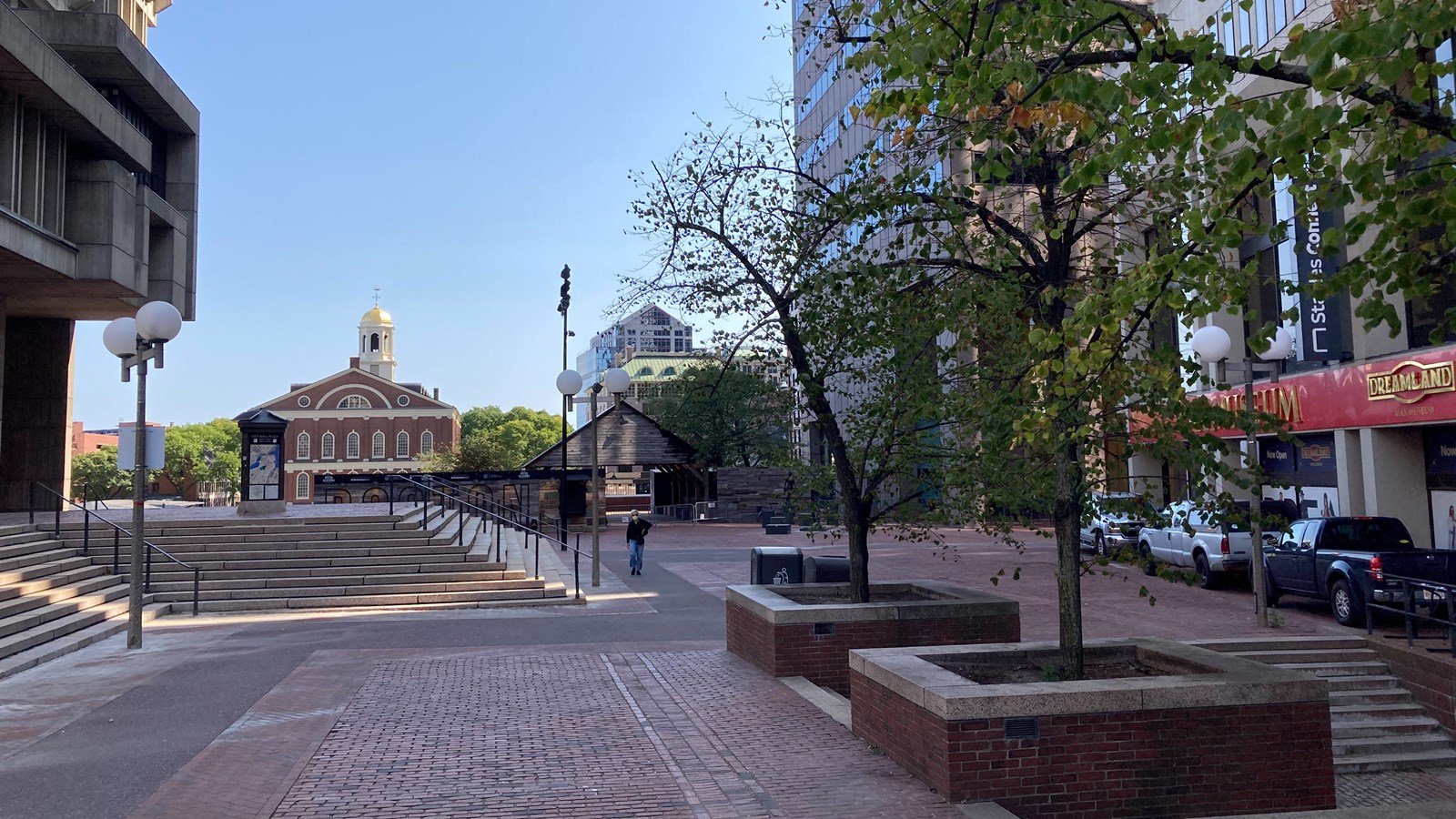Last updated: January 24, 2025
Place
Site of The Liberator Office

NPS Photo/Benstead
For nearly three decades, Cornhill Street served as the location of the office where William Lloyd Garrison published his anti-slavery newspaper The Liberator.1 A staunch abolitionist, Garrison's office became a well-known space for freedom seekers to find shelter when they arrived in Boston. According to historians Kathryn Grover and Neil Larson, "In Boston newly arrived fugitives were housed in the attics of the Lewis Hayden House and the office of The Liberator until they could be moved to other places. These two locations were perhaps the most important entry points to the Underground Railroad in Massachusetts."2 In addition to providing shelter, Garrison also stored clothing in The Liberator office to be distributed to freedom seekers.

This is the front page of "The Liberator" from April 11, 1845. (Credit: The Liberator, April 11, 1845)
Garrison also used his newspaper to bring awareness to the cause of women's rights. He published articles, letters, and petitions from notable women's rights advocates including Maria Stewart, Sarah and Angelina Grimke, Lucy Stone, and Harriot K. Hunt. The Liberator also publicized events and encouraged participation in the early years of the movement.
Footnotes
- The Liberator had multiple offices throughout its run of publication. First published on Congress Street in 1831, the offices moved to a variety of locations on Washington Street and Cornhill. The offices on Cornhill served as the homes of the publication during its most significant era of activity. See digitized editions in The Liberator Files for more information.
- Kathyrn Grover and Larson Neil, The Underground Railroad in Massachusetts, 1783-1865. National Park Service, 2000.
